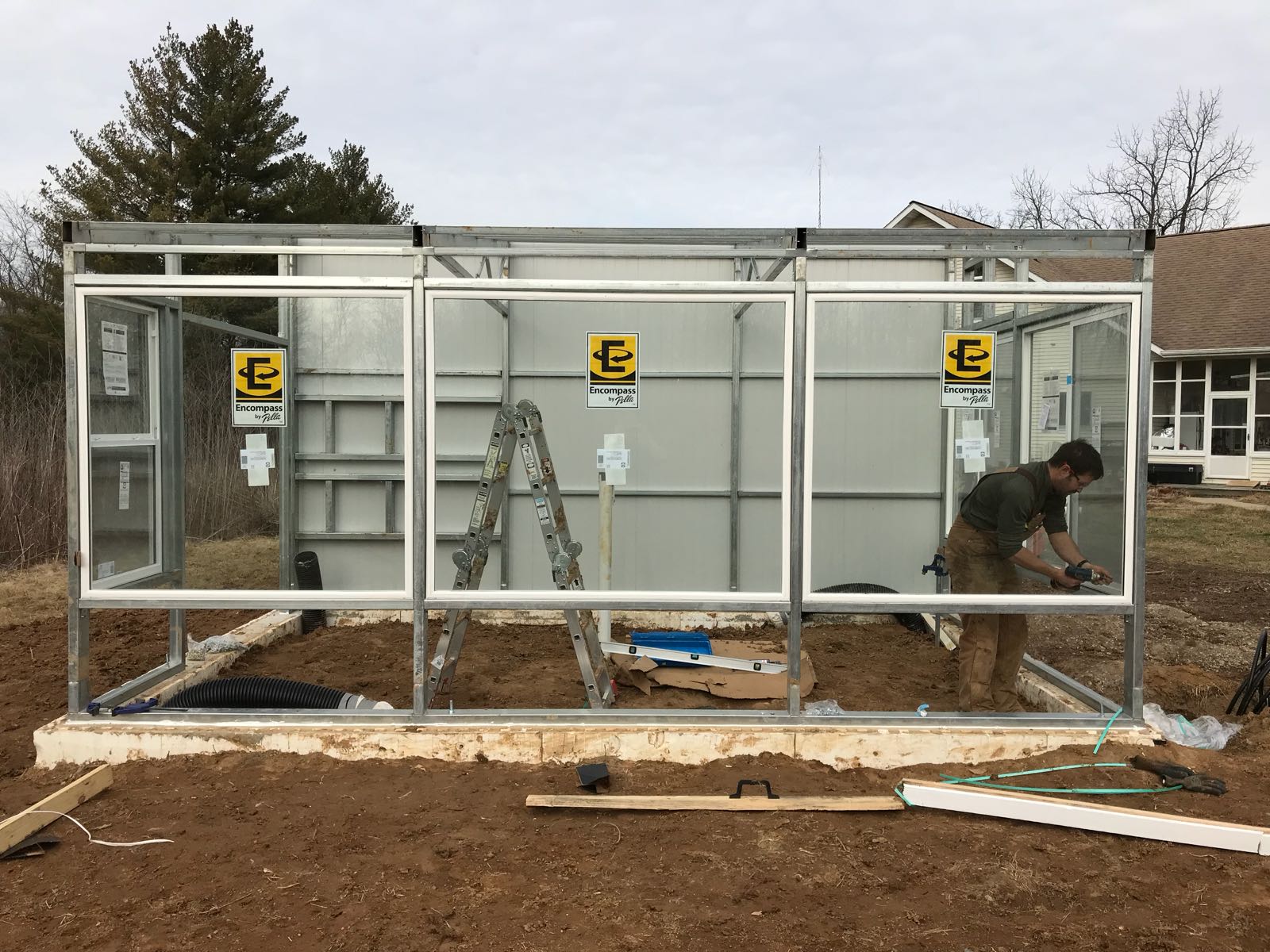One of the most important aspects of building a greenhouse is hiring the right contractor for the job. You want to make sure your project is going to be done correctly, on time and within your budget. Building a greenhouse can take weeks or months and it’s imperative you hire a contractor that you can cultivate a good relationship with. We have provided a list of important and helpful criteria to follow when making that decision.

What to consider when hiring a contractor:
- Credentials: Check references from clients that your contractor has already completed jobs for. Especially the last two or three projects. You want to know how the contractor has been finishing jobs recently – not a few years ago.
- Licensing: For large commercial greenhouse projects, you want to make sure that the contractor has the necessary license that is required for the project location. Each town generally has its own building department so you want to ensure that your contractor is licensed to build within that town’s department. Example: Boulder Colorado would have it own building department. For a smaller, residential-like projects, you don’t need to worry about your contractor being licensed with the city as long as you have gone through the proper steps to obtain a building permit.
- Financial Status: Research the contractor’s financial stability. Are they able to start and finish the job without any financial problems that could cause delay or prohibit them from finishing the job. This can be done fairly simply by calling the Better Business Bureau and asking if there are any complaints registered against the contractor. You can also check their banking references and local supply houses where they have accounts to see if they pay their bills. It is not necessary to do all of these things but certainly some of them would give you better peace of mind. You must be comfortable with his ability to complete the job in a professional manner, with a good level of professionalism and finish.
- Experience: For larger commercial greenhouses, ask if the contractor has experience with steel frame buildings. Does their crew also have experience with steel frame construction? Can they read plans and follow them? Are they able to do the necessary paperwork in a timely manner? Can they supply a *schedule of values that is real and accurate? Are they capable of making a schedule for the project?
Schedule of values is a detailed schedule that apportions the total contracted sum into separate amounts relating to different portions of the work. This is extremely important for the client to refer to when they are paying the contractor as the project moves along. The schedule of values should be provided with the initial bid by the contractor. See below for an example schedule of values.

What to consider when you’re bidding out for a contractor:
If you get multiple bids it is important to review and compare the bids for the following. The bids should be itemized with prices, not just a total for all items.
- Completed bid: Are all items covered?
- Variance: Are there wide variances in pricing for specific items in each bid.
- Comparison: How much does the final cost vary from each bidder?
- Clear Allocation: Do the bids show the overhead and profit separately after the actual cost for the construction only?
- Insurance:
- Is there an insurance cost for the job and are you named as an additional insured?
- Is the insurance current and NOT expired?
- Are the limits of the insurance sufficient to cover any liability problems?
The contractor must carry their own insurance for construction. Simple liability insurance is NOT construction insurance. You should also contact your insurance agent to ask about what additional insurance you may need to cover your liability if anything happens. We mentioned before that you should be named as an additional insured party on the contractor’s insurance. This is critical. What that means is if there is any claim arising from the project, your contractor’s insurance will pay off first because they are acknowledging that they are also covering you under the contractor’s policy. Some insurance agents may recommend an umbrella policy for the client that will cover any additional costs in an injury lawsuit. The umbrella is relatively cheap and only needs to be in force until the end of the project.
- Payment schedule: Is payment, and when the contractor expects payment, mentioned in the bid?
Usually the contractor wants a payment right after the signing of the contract. Since the contractor is not supplying any material at that point, a good solution would be to pay a percentage of the price on the first day of work. No more than 1/3 of the total bid.
Below is an example Schedule of Values for an 1000 sq. ft. building. While it is strictly an estimate, this schedule is a great resource to use for itemization of project portion and payment. Please note that this list may vary due to site conditions.
- Permit Cost (depends on building department location)
- Soil Samples (borings) . $1,000
- Gradings $1,500
- Excavation $2,500
- Digging for footings foundation and slab $1,500
- Concrete $4,000
- Steel Frame $8,000
- Insulated Panels $6,000
- Glazing $6,000
- Electric $5,000
- Plumbing $1,500
- GAHT System (option) (depends)
- Interior Finish (doors, corking and fans) $2,000
- Landscaping (option) (depends)
- Closeout (inspection, punch list) $1500
- Final (Certificate of Occupancy) 10% held until CO is granted
Smaller building projects, for instance, can function under a significantly more simple schedule of values. Oftentimes the client will pay the contractor 50% up front, for labor and materials, and then the other 50% when the project is finished.

Each time a payment is made a waiver of lien should be signed by the contractor. This simply states that they have been paid a portion of the contract and they will use this money to pay any expenses, including labor, for the project. They can also take out their overhead portion and profit from a portion of the amount you paid them.
This is where the schedule of values list they submitted with the bid becomes important. When the contractor requests their second payment, you can check the schedule of values and determine if that amount of work has been accomplished.
The waiver of liens are made up to cover the gross amount cumulatively.
Example: First payment for your contractor is $100. This requires a waiver of lien for $100. The second payment for your contractor is for $150, so the second waiver will read $250 (the first and second amount totaled together and so on). We can send you copies of waiver of liens.
If you have any questions on hiring a contractor for your Ceres greenhouse project, please contact us addressing our contractor and construction management expert, Thomas Brusca.